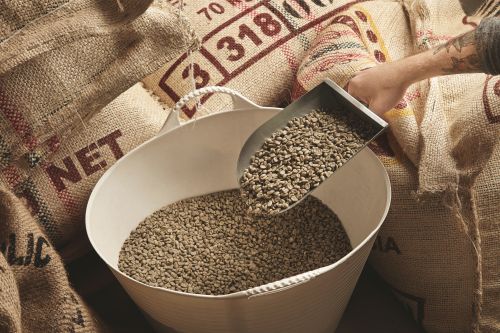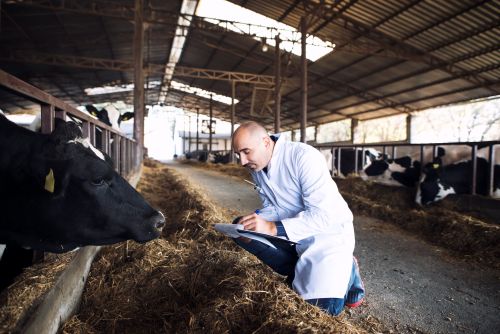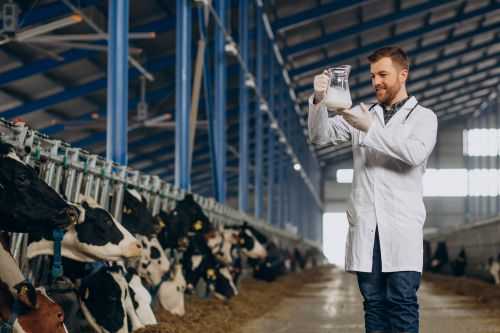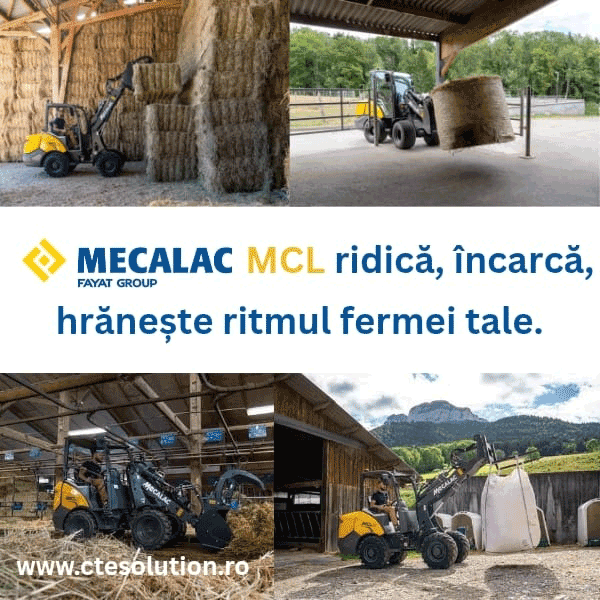901

Biosolutions are nature's tools, providing a powerful way to accelerate the transition to a sustainable and greener future, while also potentially strengthening supply chain resilience, sovereignty, and Europe's competitiveness.
A More Sustainable Food System
These can include processes such as food fermentation for a more sustainable food system and the industrial scaling of enzymes to accelerate certain manufacturing processes while saving water, energy, and raw materials. Genetic modification of microorganisms to produce high-value products, such as nutrients, bio-pheromones, and biomaterials through precision fermentation.
Although the sector is not new, there is a vibrant market for emerging biosolutions that extends far beyond pharmaceuticals, including the development of renewable energy and fuel, creating bio-based solutions for industries and applications.
Seed treatment for agriculture is a growing biological solutions sector, for example, with Poncho® Votivo® 2.0, a leading and vibrant product. It is a combination of two carefully applied bacterial strains on seeds. One creates a living barrier around the seeds, preventing damage from harmful soil-dwelling insects that would feed on the small and vulnerable roots of a young plant.
This type of biological crop protection is a biosolution created by BASF and is just one example of how beneficial living organisms and nature-identical substances can improve crop protection management and support plants throughout their lifecycle while contributing to a more sustainable and greener future by harnessing the potential of nature's own tools.
The value of global markets for biosolutions (including the European market) could grow from a baseline value of EUR 240 billion in 2020 to EUR 640 billion in 2030. This growth underscores the significant economic potential that biosolutions offer Europe locally and globally and the need to ensure the EU's prominence in the global market. It also highlights the opportunity for Europe to enhance its sustainability, resilience, and competitiveness through the strategic use of biosolutions.
"The Green Revolution"
The industrial biorevolution is a once-in-a-lifetime opportunity for Europe. A small bio-revolution with a huge impact is underway. Advances in research and innovation in biological sciences and technology have created untapped potential for biosolutions to help Europe and the rest of the world face some of the greatest challenges of our time.
Artificial intelligence (AI) is rapidly demonstrating its transformative impact on biotechnology.
Biotechnology companies working on new biosolutions can now use artificial intelligence to enrich their processes, stimulate innovation, and explore new business models.
AI enables the optimization of chemical compounds, predicting which are most likely to be effective, and reducing the number of compounds that need to be tested in the laboratory. This significantly reduces the time needed to produce new drugs.
Layer in Machine Learning (ML) to streamline clinical trials by identifying patient populations most likely to benefit from a new therapy, and we see the global race for market share unfolding on the circuits of a microprocessor – if Europe falls behind, catching up will be monumentally difficult – so staying on or ahead of the biosolutions curve is essential. For this reason, biosolutions have significant geopolitical roles.
Sustainable Future
If Europe wants to achieve its ecological goals defined in the Fit for 55 and Farm to Fork strategies and if the Green Deal is to fulfill its promise, not least in the context of food and feed shortages, biosolutions must be an integral part of Europe’s strategy for a sustainable future.
The vision is to get Europe back on track towards a world where we have significantly reduced our need for fossil materials, water, and arable land.
Biosolutions are already reducing environmental and climate impacts in various sectors, such as food production, industry, transportation, and energy supply, and can also play a significant role in conserving and enhancing biodiversity.
One approach is to implement innovative biosolutions to replace the use of harmful chemicals for crop protection in our food production with biological alternatives that do not harm biodiversity.
Low Carbon Concrete Jungle
When it comes to finding solutions for today's biorevolution, we need only look at the relentless expansion of our urban landscapes, where cement has emerged as an indispensable ally, but still casts a long and ominous shadow – it is a significant source of CO2 emissions.
Biomason, an innovative company at the forefront of ecological engineering, offers a beacon of hope in this ecological impasse. Their pioneering process boasts a nearly negligible carbon footprint, avoiding the need for fossil fuel kilns and limestone calcination – two notorious culprits in the traditional cement production environment.
In an era where every step towards sustainability counts, biocement emerges not just as an alternative, but as proof of human ingenuity’s capacity to reconcile with nature. It promises construction that is both monumental in its physicality and minimal in its environmental impact – a silent revolution resonating amidst the concrete jungles of the world. And when we build homes, offices, and factories, we need to feed the families and workers who occupy them.
New Genomic Techniques
Selective breeding and cross-pollination have long been the tools of choice for coaxing desirable traits and increasing crop yields, a practice that dates back millennia.
In today's agricultural arsenal, New Genomic Techniques (NGTs) are the latest entrants in a variation of this ancient theme.
NGT's cutting-edge tools promise to do what our ancestors did, but with greater speed and precision. Unlike traditional mutagenic techniques, which relied on the random effects of radiation or chemical exposure on seeds, NGTs offer a more targeted approach.
They allow breeders to focus on specific genes in a plant’s DNA, paving the way for the development of new, more sustainable traits or the reintroduction of lost abilities from related plants.
The implications are profound. With NGT, breeders can improve crops with greater precision and speed than conventional random breeding techniques ever allowed.
These innovative tools enable the precise and efficient development of improved plant varieties that are climate-resilient, pest-resistant, require fewer fertilizers and pesticides, or deliver higher yields.
In essence, NGTs hold the potential to enhance the sustainability and resilience of our crops, boost their nutritional value and processability, and support our ongoing efforts to reduce our carbon footprint.
As we stand on the brink of this new era in agriculture, it is clear that these techniques could play a crucial role in shaping the future of food production and, therefore, Europe's food security, global trade strategy, and democracy stability in a warm, dry, and intensively cultivated future. (Photo: Freepik)





